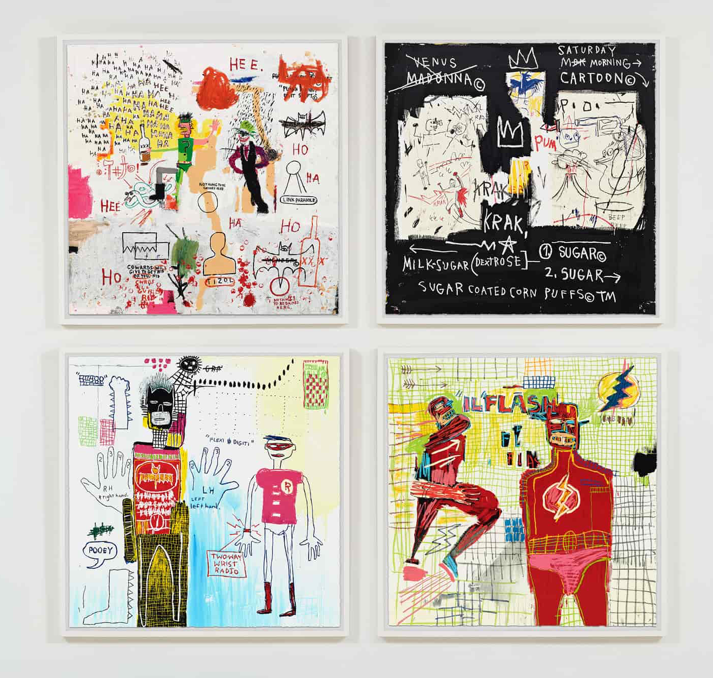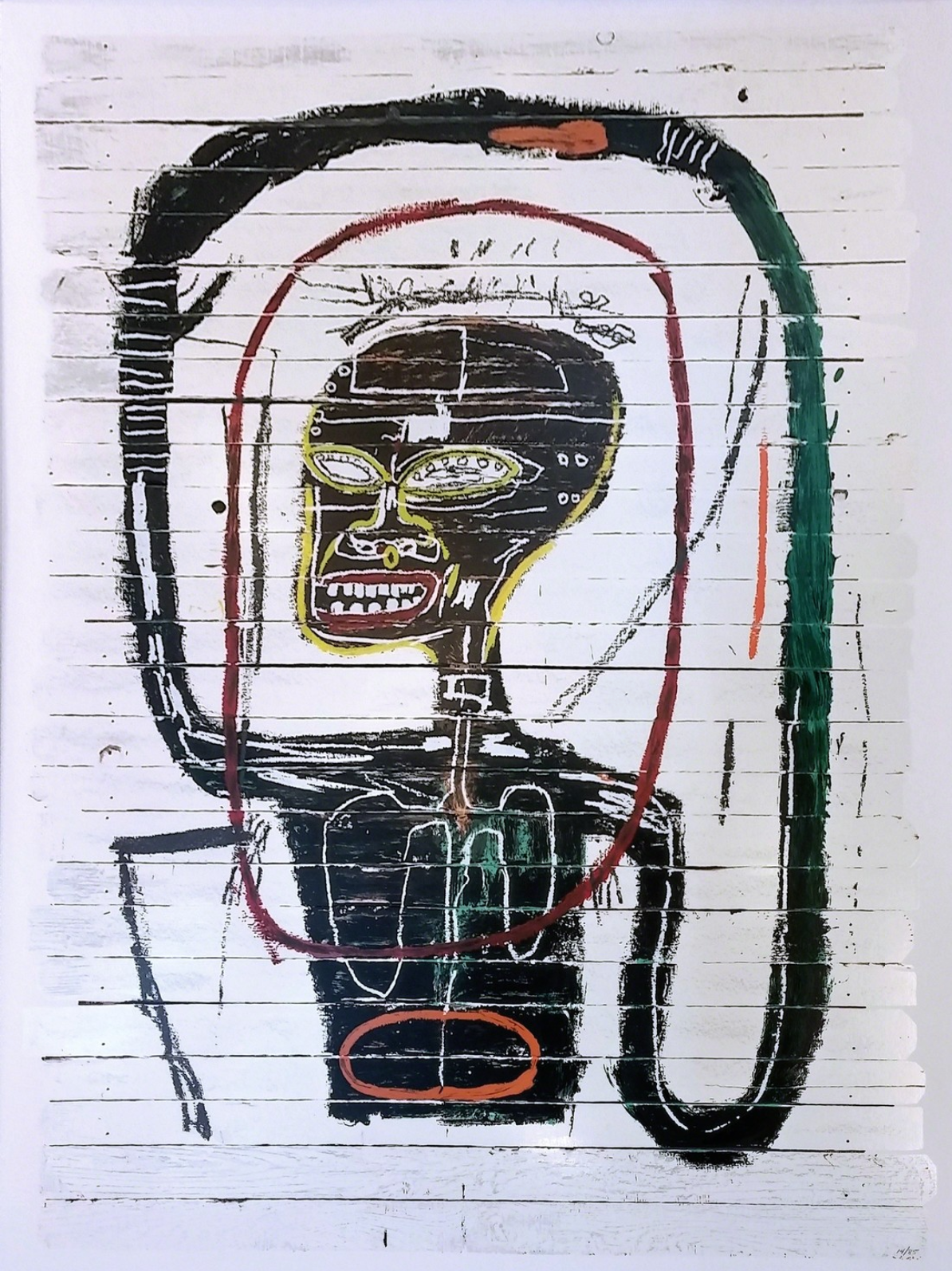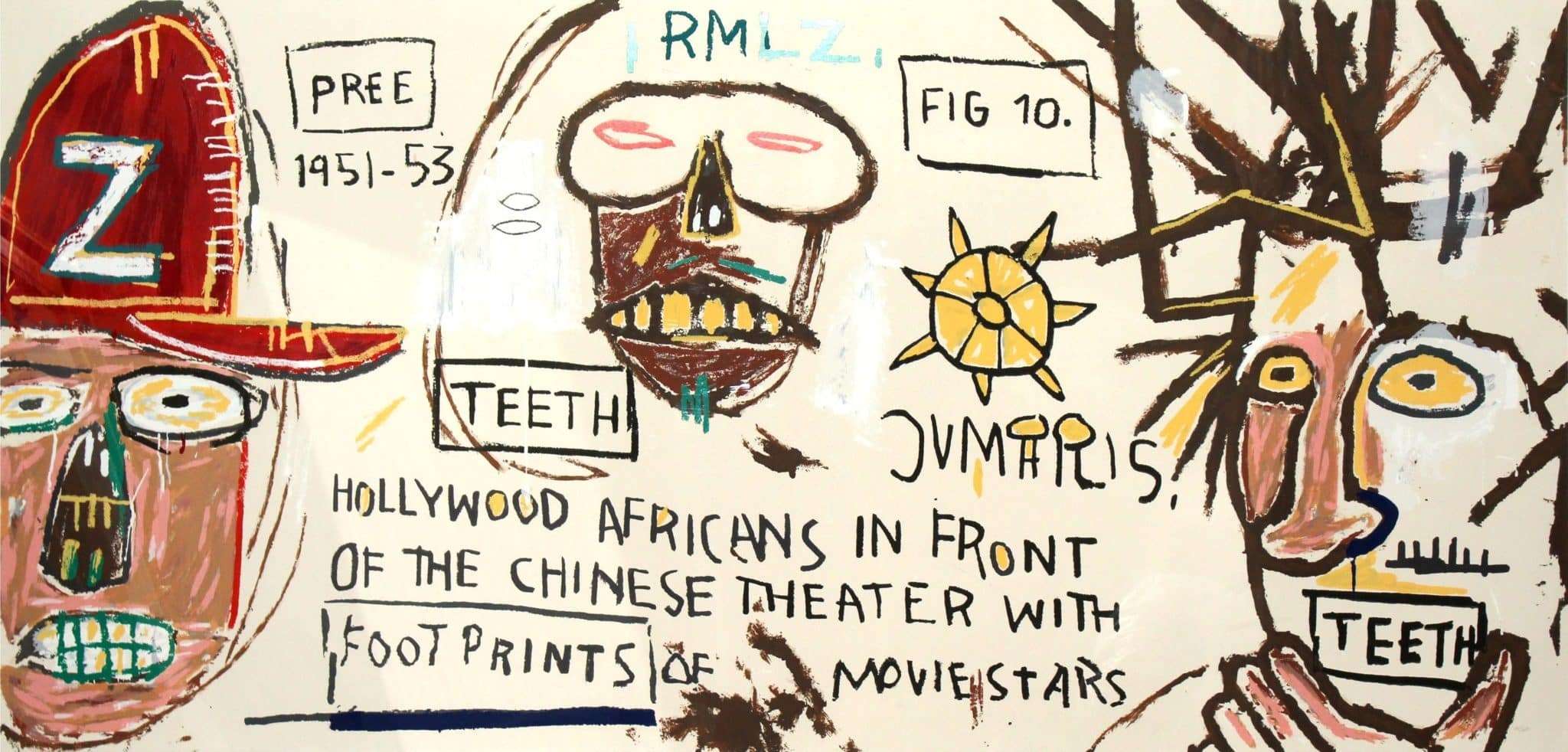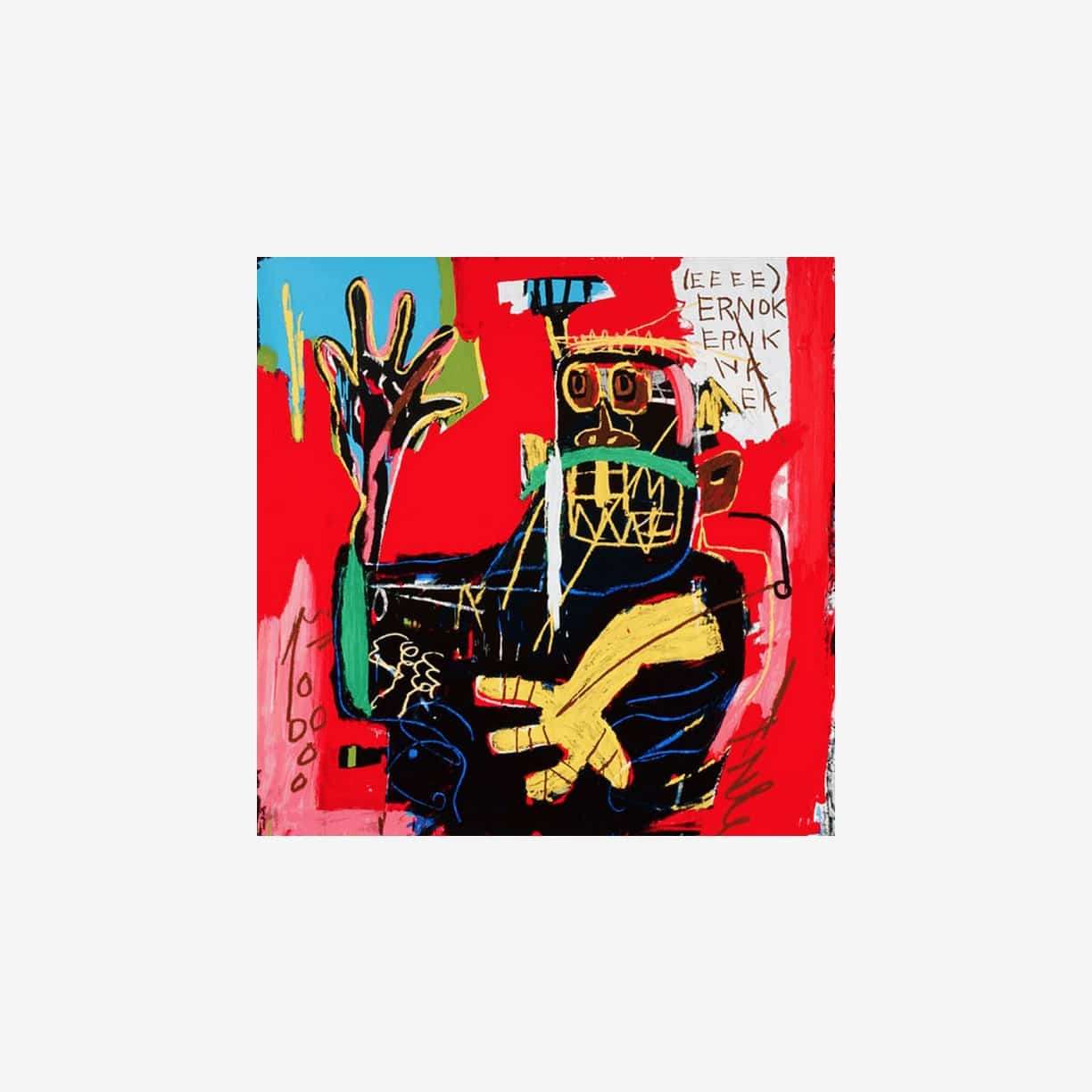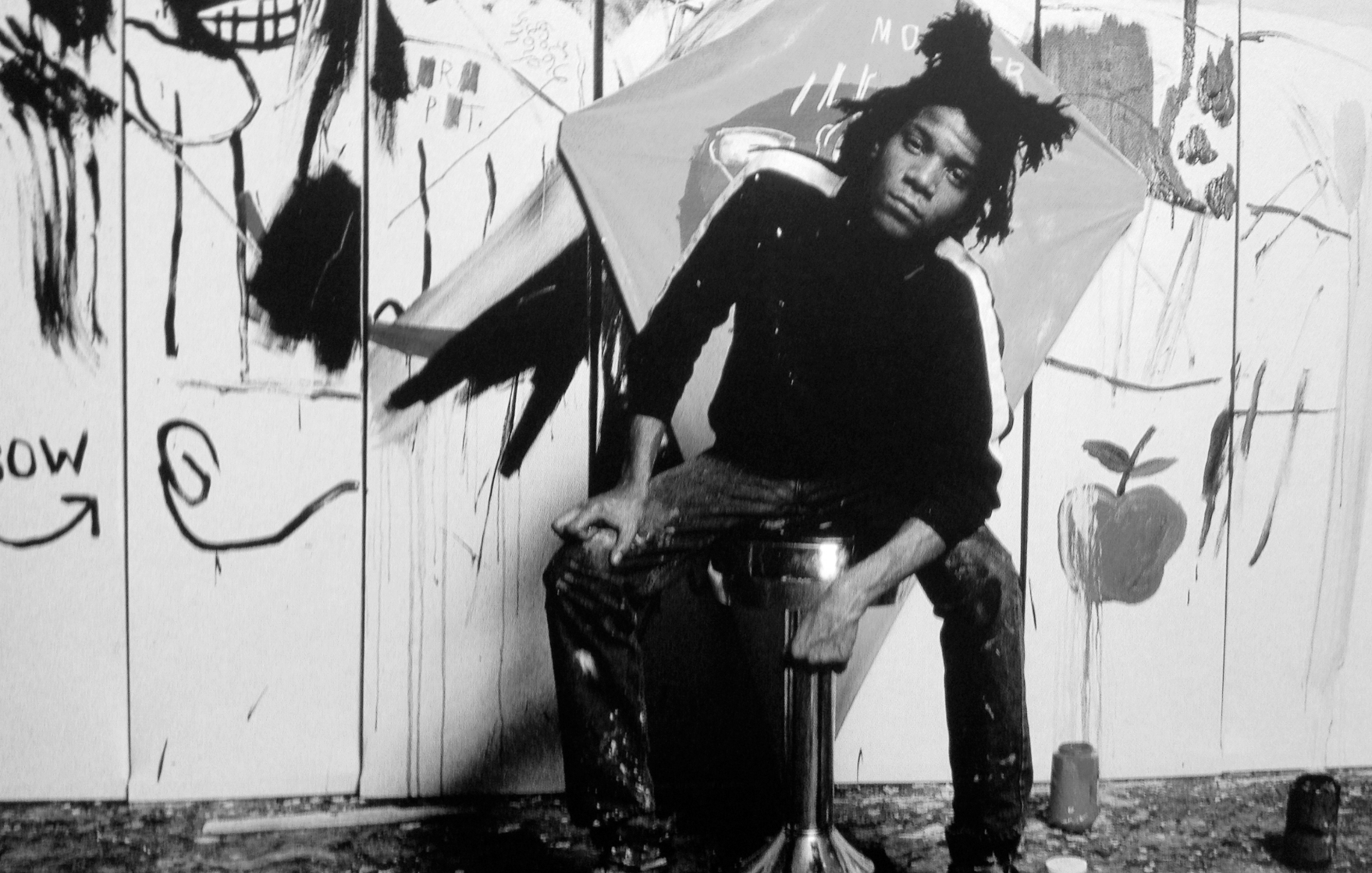
Jean-Michel Basquiat
Buy original Jean-Michel Basquiat artworks from ArtLife, including signed prints from across his career. Learn more about Jean-Michel Basquiat life and work here.
Artwork
Biography
Born in 1960, Jean-Michel Basquiat grew up in Brooklyn, New York, and was quickly introduced to the world of fine art. By the age of six, he was a junior member of the Brooklyn Museum, one of his favorite places in the city as a child.
In 1968, when he was just eight years old, Basquiat broke his arm, and had to have his spleen removed after he was hit by a car. While he was recovering from these injuries, his mother gave him a copy of Gray’s Anatomy—the human anatomy textbook designed for medical students, which was originally published in 1858. These anatomical drawings would later influence his own canvases and graffiti, as evidenced by pieces like Untitled (Head).
After his parents’ divorce in 1968, Basquiat and his two sisters lived with their father in Brooklyn before moving to Puerto Rico in 1974. They returned to New York City two years later when Basquiat was 15, and iIt was around this time that he ran away from home in protest at his difficult family life. The young artist slept in Tompkins Square Park, before being arrested and returned to his father.
At the age of 17, Basquiat dropped out of the 10th grade at Edward R. Murrow High School to attend the alternative City-As-School instead. This decision led his father forced him out of the house, leading to Basquiat moving in with friends in Brooklyn.
It was during this time that Basquiat began to make his money selling sweatshirts and postcards emblazoned with his artwork, all without a stable living situation. However, in 1981, he moved into a small studio apartment, giving him a space to work on his art, and move his work from the street into the gallery.
By 1982, Basquiat had met acclaimed pop-artist
At the end of 1982, when working on his second West Hollywood gallery show, Basquiat moved in with his girlfriend—a then-unknown singer named Madonna. However, as the singer recalled, their romance was short-lived and ended due to Basquiat’s problems with drug addiction. He would die of an overdose just a few years later, aged 27.
As a teenager, Basquiat created a buzz with his graffiti tag “SAMO” (which meant “same old s**t”), which he designed during high school with his friend Al Diaz. The tag appeared on buildings around lower Manhattan and Brooklyn between 1977 and 1980 and, as he later explained, it “was supposed to be a logo, like Pepsi”. However, by the next decade, the tag “SAMO is dead” declared the end of Basquiat’s collaboration with Diaz.
Basquiat famously immersed himself in pop culture while he worked, which would wind up appearing in his creations. “I’m usually in front of the television,” he said in an interview. “I have to have some source material around me to work off.” This material would generally come in the form of textbooks, magazines, and other artwork scattered around him as he painted.
Basquiat’s rise to fame coincided with the burgeoning popularity of Neo-Expressionism, a movement populated by other experimental artists, such as Julian Schnabel and Susan Rothenberg, gaining traction for their avant-garde pieces.
This was also around the same time that Basquiat and Warhol’s professional relationship really took off. From 1984 to 1986, the duo collaborated on a series of works, including Ten Punching Bags (Last Supper). Their collaborations would often involve Warhol starting the piece in his own style, with Basquiat layering his own work over the top. However, the failure of their joint exhibition, Paintings, led to an irreconcilable falling out between the two mercurial artists.
While Basquiat enjoyed huge amounts of success during his lifetime, it wasn’t until after his death that his fame truly skyrocketed. His artwork has had an aesthetic influence on fashion brands such as Supreme and Raf Simons, fetching huge prices from an A-list fanbase, including Jay-Z and David Bowie. His piece, Untitled (1982), also became the most expensive American painting ever to sell at auction, going for a massive $110.5m in 2017.
